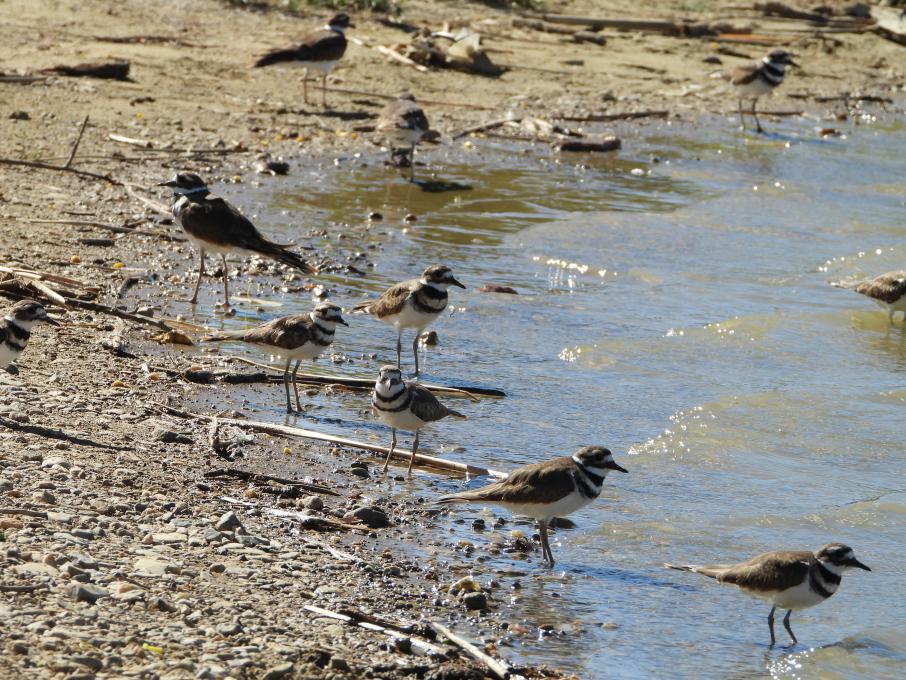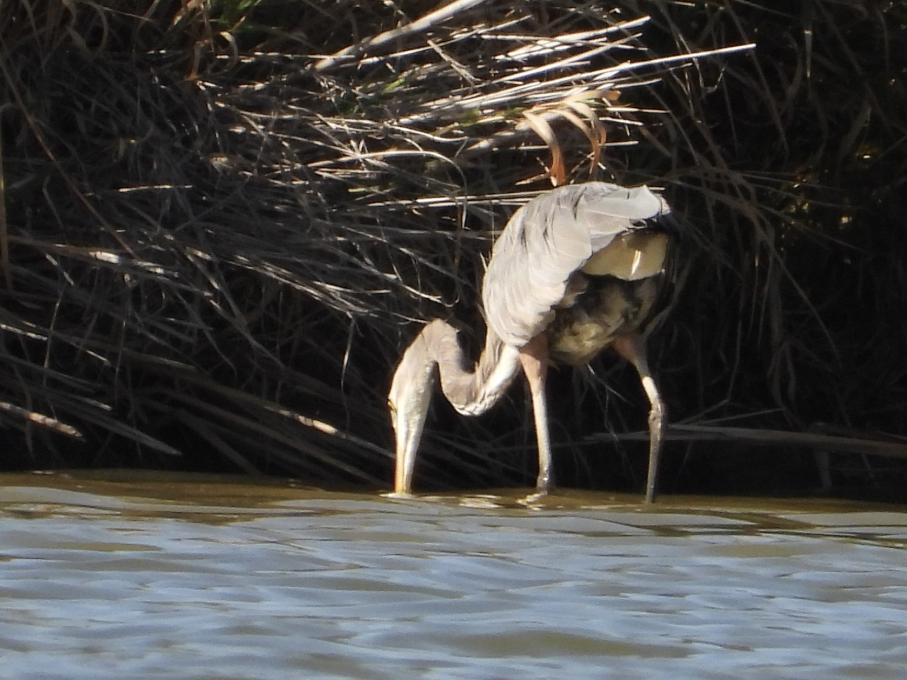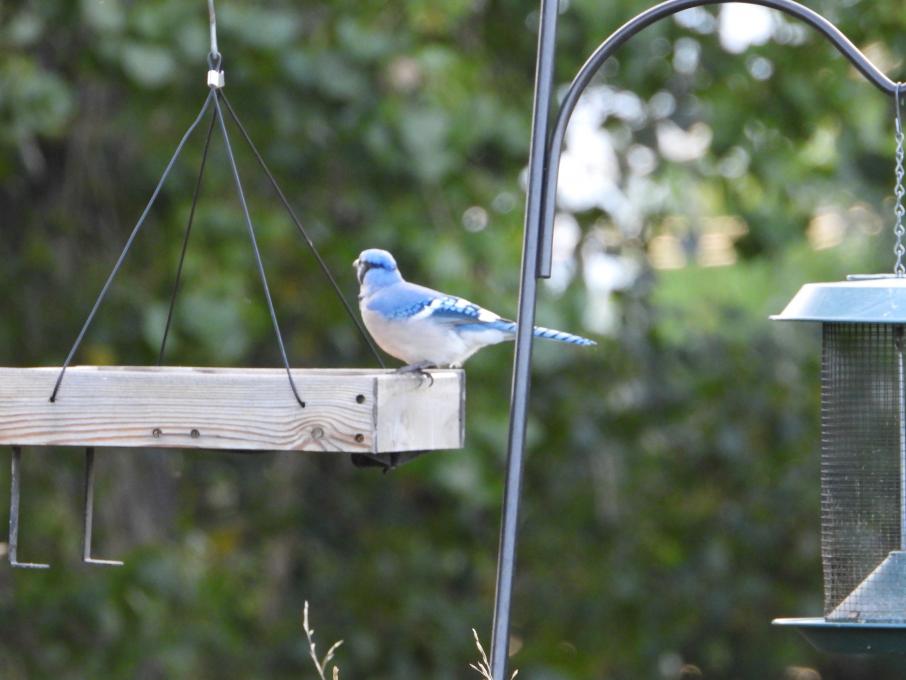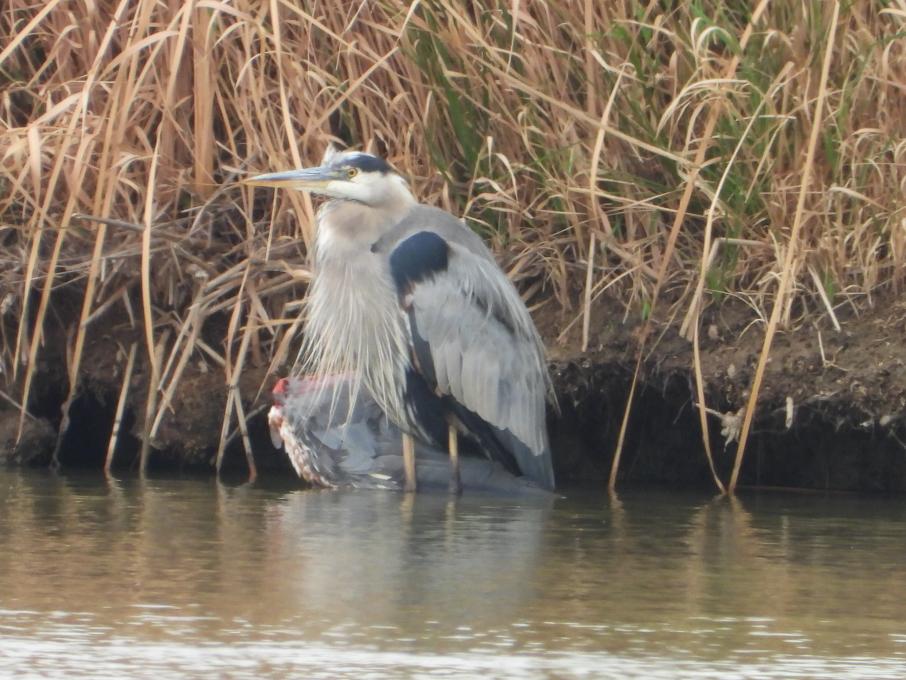Whitney
Forum Replies Created
Viewing 8 posts - 1 through 8 (of 8 total)
-
WhitneyParticipantCool!in reply to: Practice Matching Your Gear to Your Goals #992849
-
WhitneyParticipantI have purchased a Nikon P1000 which I love because it is a point-and-shoot with amazing zoom capabilities. I have used it in the field to “see” birds that I cannot see with my binoculars. I would have to say that my goal is simply documentation. I use photographs to ID birds that I am unable to ID in the field. It also turns out that my friends really enjoy the pictures that I share with them. I have taken the screens out of several windows to make myself an indoor “blind”. This seems to work well. I have also found that whether I am on the back patio or in the field, simply sitting still works very well. Sitting still (with a book to help pass the time) I was treated to wonderful observations of these Kildeer.
 in reply to: Practice Matching Your Gear to Your Goals #992848
in reply to: Practice Matching Your Gear to Your Goals #992848 -
WhitneyParticipantI grew up hearing Western Meadowlarks. It is a sound that I have always associated with summer. I still hear Western Meadowlaks but I have never, ever SEEN one!in reply to: Practice Understanding Birds for Better Photos #992845
-
WhitneyParticipantWonderful photo!in reply to: Practice Understanding Birds for Better Photos #992844
-
WhitneyParticipantThe bird I am interested in is the Great Blue Heron. What kind of habitat does this bird depend on? Wetland habitat with shallow water for feeding. Trees for nesting. What are their food sources? “Highly variable and adaptable. Eats mostly fish, but also frogs, salamanders, turtles, snakes, insects, rodents, birds. Has been seen stalking voles and gophers in fields, capturing rails at edge of marsh, eating many species of small waterbirds.” From Audubon.com Is it breeding or nesting season for this bird? Neither. Looks like breeding occurs from March to May with 2-7 eggs laid. What distinctive behaviors can I expect to see? Solitary stalking food in shallow water. Nesting in trees in colonies - sometimes very large colonies. What sounds do they make, and why? From all about birds.org: CALLS Great Blue Herons are most vocal on the breeding grounds, where they greet their partner with squawking roh-roh-rohs in a “landing call” when arriving at the nest. A disturbance can trigger a series of clucking go-go-gos, building to a rapid frawnk squawk that can last up to 20 seconds. If directly threatened, birds react with a screaming awk lasting just over 2 seconds. Chicks give a tik-tik-tikcall within minutes of hatching. OTHER SOUNDS Both male and female Great Blue Herons snap their bill tips together as part of breeding and territorial displays, a behavior that may be analogous to a songbird’s territorial song. Paired birds often “clapper” at each other, chattering the tips of the bill together. Is the bird migratory or does it stick around all year? Remain all year. I spent some time a few months back trying to catch a GBH catching a fish.

 in reply to: Practice Understanding Birds for Better Photos #992843
in reply to: Practice Understanding Birds for Better Photos #992843 -
WhitneyParticipantMy ears definitely work better than my eyes! From my bedroom window I can easily identify house finches, white-crowned sparrows, northern flickers, black-capped chickadees, blue jays, mourning doves, Eurasian collared doves, western meadowlarks and red-tailed hawks. I am not as good as identifying birds “in the field”. I think it just experience. I have spent a lot of time listening to the birds at my house.in reply to: Activities: Noticing Behaviors #992330
-
WhitneyParticipantWell, my husband got a kick out of watching the bird watcher. You can see my sit spot in the back yard. In the summer months I would sit on the deck with my coffee while the sun rose which was lovely. The hummingbirds would come right up to me! Anyway, here are a few photos I took this evening.


 in reply to: Practice Gaining an Audience with Birds #980593
in reply to: Practice Gaining an Audience with Birds #980593 -
WhitneyParticipantI went looking for Great Blue Herons today. I think if I hadn’t learned more about them beforehand, I would have missed the one bird that was there. Using my binoculars, I scanned the shoreline. Lo and behold - t
 here it was! Poor thing looks like it has a damaged wing. in reply to: Practice Understanding Birds for Better Photos #980444
here it was! Poor thing looks like it has a damaged wing. in reply to: Practice Understanding Birds for Better Photos #980444
Viewing 8 posts - 1 through 8 (of 8 total)






 here it was! Poor thing looks like it has a damaged wing.
here it was! Poor thing looks like it has a damaged wing.